Airports:
Airports are places where aircraft take off and land and where people and cargo can travel between cities and countries. Over the years, airports of different sizes and with different technologies have been built in many countries and cities.
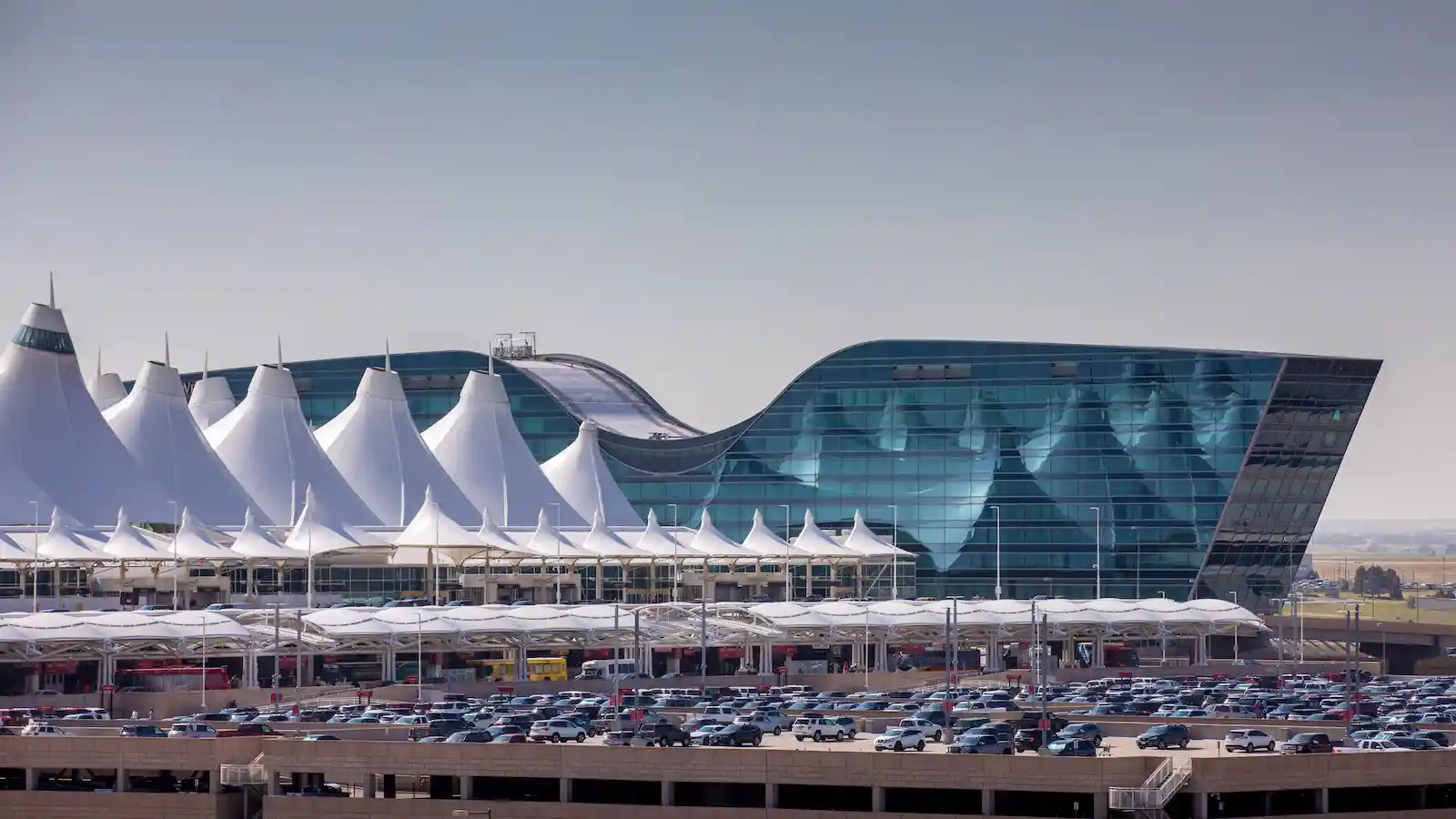
Airplanes have become a part of our lives since the Wright brothers’ first flight on December 17, 1903, in Kitty Hawk, North Carolina. Because they provide faster transportation than other means, airplanes need a place where they can land and take off safely. Since the first airport, College Park Airport was established in Maryland, USA, in 1909, airports have been built in dozens of countries and cities.
Airports are not just simple structures that allow airplanes to travel; they also reveal a city’s cultural value and engineering skills. It is said that airports make the first impression of a city and a country.
Over the years, many airports have been built in different cities using different technologies, construction techniques, and designs. Not all airports can accommodate the same number of aircraft and passengers. Airports are built in different sizes depending on the need. There are 49,024 airports in the world, but some of them are big. Here are the 10 biggest airports built worldwide.
1. King Fahd International Airport

Location: Dammam, Saudi Arabia
Architect: Minoru Yamasaki Associates
Area: 776 km²
King Fahd International Airport, which has the title of the biggest airport in the world, is named after King Fahd Abdulaziz al-Saudi. It is also known as Dammam International Airport. The airport, which spreads over a total area of 1,92,000 acres, was opened in 1999. It is one of the three main international airports in the Kingdom and serves the entire eastern province.
Passenger capacity is 26 million per year, making King Fahd International Airport the world’s 3rd largest airport by passenger capacity. With the addition of a 2-story cargo building of 39,500 m² in 2015, it now handles 125,000 tons of cargo annually. The buildings divided into units such as the terminal building, mosque, cargo building, parking facility, customer canteen, royal terminal, etc., cover a total area of ??43 km², which is 5.6% of the airport’s size. The mosque, located above the parking facility, has a capacity of 2000 people.
The 6-storey terminal building of 327,000 m² is designed to be expandable in the future. The airport has two parallel runways of 4,000 m in length and 60 m in width. These two parallel runways can accommodate large aircraft such as the Airbus A340-600 and Boeing 747-400.
2. Denver International Airport

Location: Colorado, USA
Architect: Curt Fentress and James Brandburn
Area: 135.7 km²
Denver International Airport, the biggest airport in the United States and the second biggest in the world, covers 34,000 acres of land and occupies one-third of Denver. Opened in 1995, the airport is known as the second busiest airport in the world. While the annual passenger number was recorded as 60 million before COVID-19, the number dropped to 33 million after the pandemic.
The airport features an iconic white tent-shaped roof. The design represents the beauty of the Rockies. A catenary steel cable system, similar to the Brooklyn Bridge design, supports the fabric roof. This design allows for future expansion. The airport is a sustainable design, with environmentally friendly projects such as a large solar panel installation and green building.
3. Atlanta Hartsfield- Jackson Airport
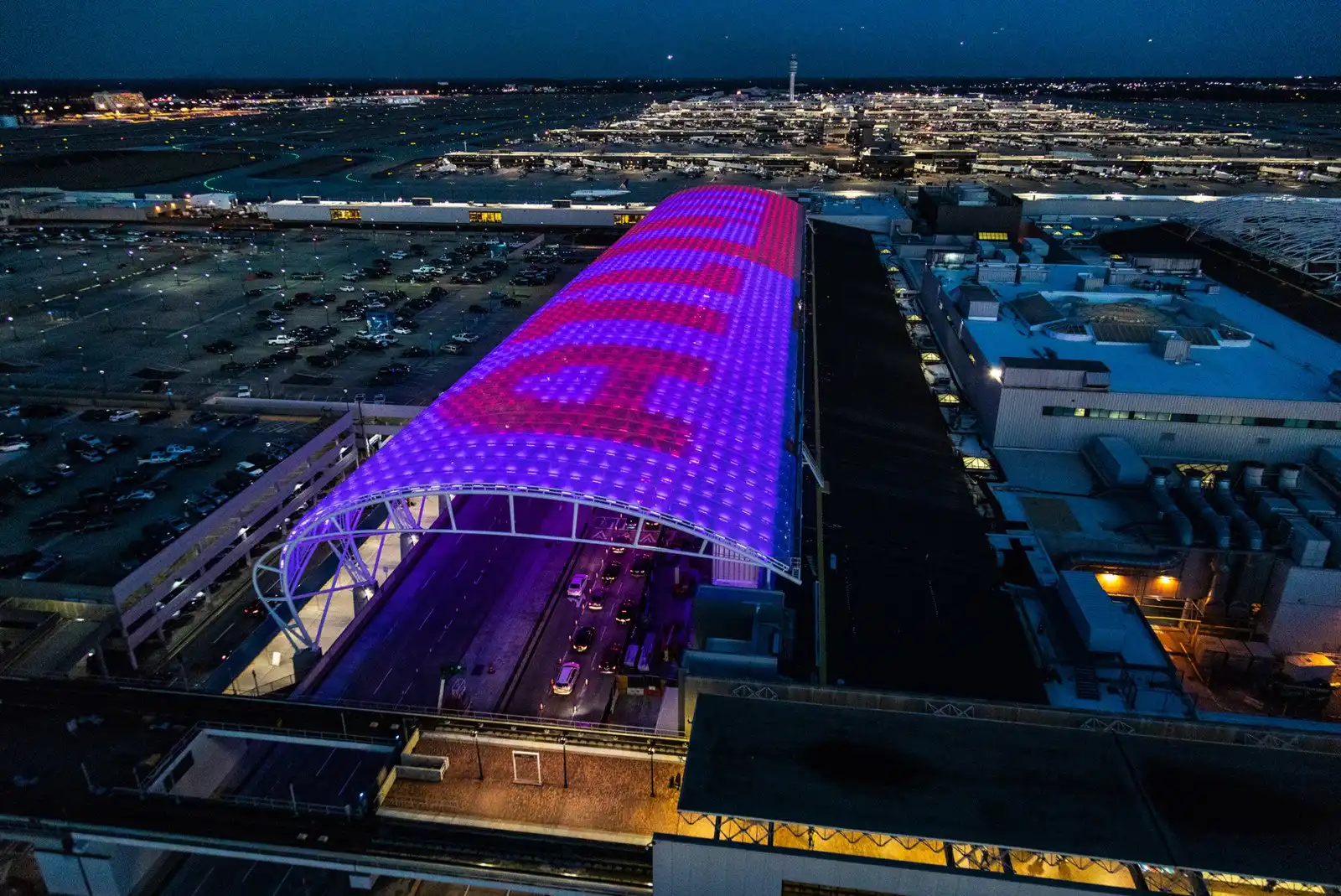
Location: Atlanta, Georgia, USA
Architect: Stevens & Wilkinson, Smith Hinchman & Grylls, and Minority Airport Architects & Planners
Area: 78 km²
Atlanta Harsfield-Jackson Airport, which holds the title of the world’s busiest airport with a capacity of 89 million passengers, is the world’s 3rd largest airport. The airport, which is located on 19,274 acres, was opened in 1998. It has 5 runways positioned parallel from east to west and these runways allow more than one aircraft to take off at the same time. The terminal’s design includes 2 twin structural steel canopies that can be seen from the air and land. The canopy has translucent ETFE fabric panels.
4. Istanbul International Airport
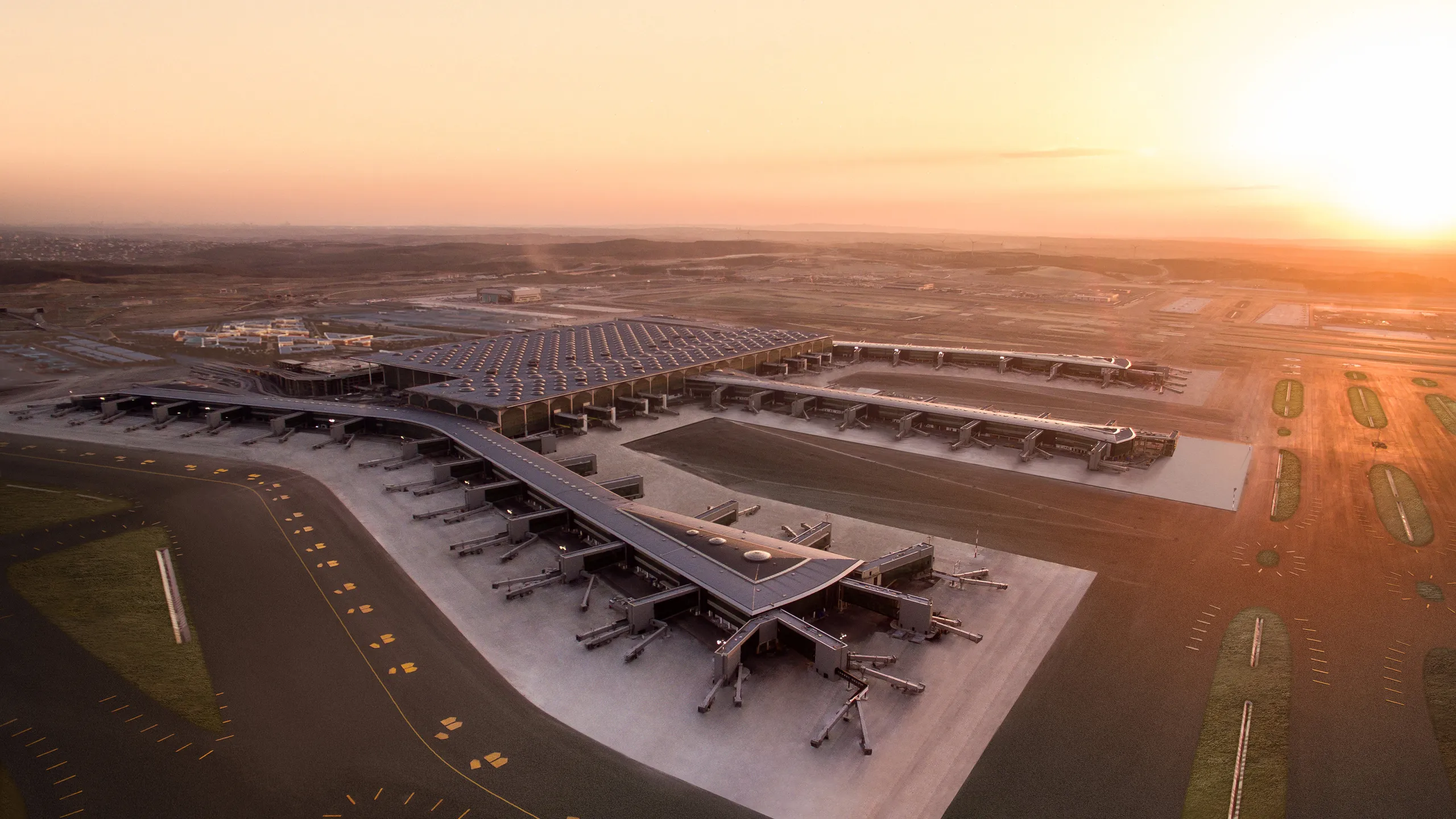
Location: ?stanbul, Türkiye
Architect: Grimshaw Architects, Nordic Office of Architecture and Haptic Architects
Area: 76.5 km²
Istanbul Airport, one of the busiest airports in Europe, was opened in 2018. The airport, which serves passengers with a main terminal building of 1 million 400 thousand square meters under a single roof, has a passenger capacity of 90 million. It is aimed to increase this number to 200 million passengers after all phases are completed. It also has a cargo capacity of 4 million tons.
The airport has 6 runways of 3.5-4 km in length that allow large aircraft to land and take off. Thanks to these runways, the largest passenger aircraft with code F can land at the airport. There is also a 17-story air traffic control tower with a height of 90 meters inside the airport.
5. Dallas Fortworth International Airport
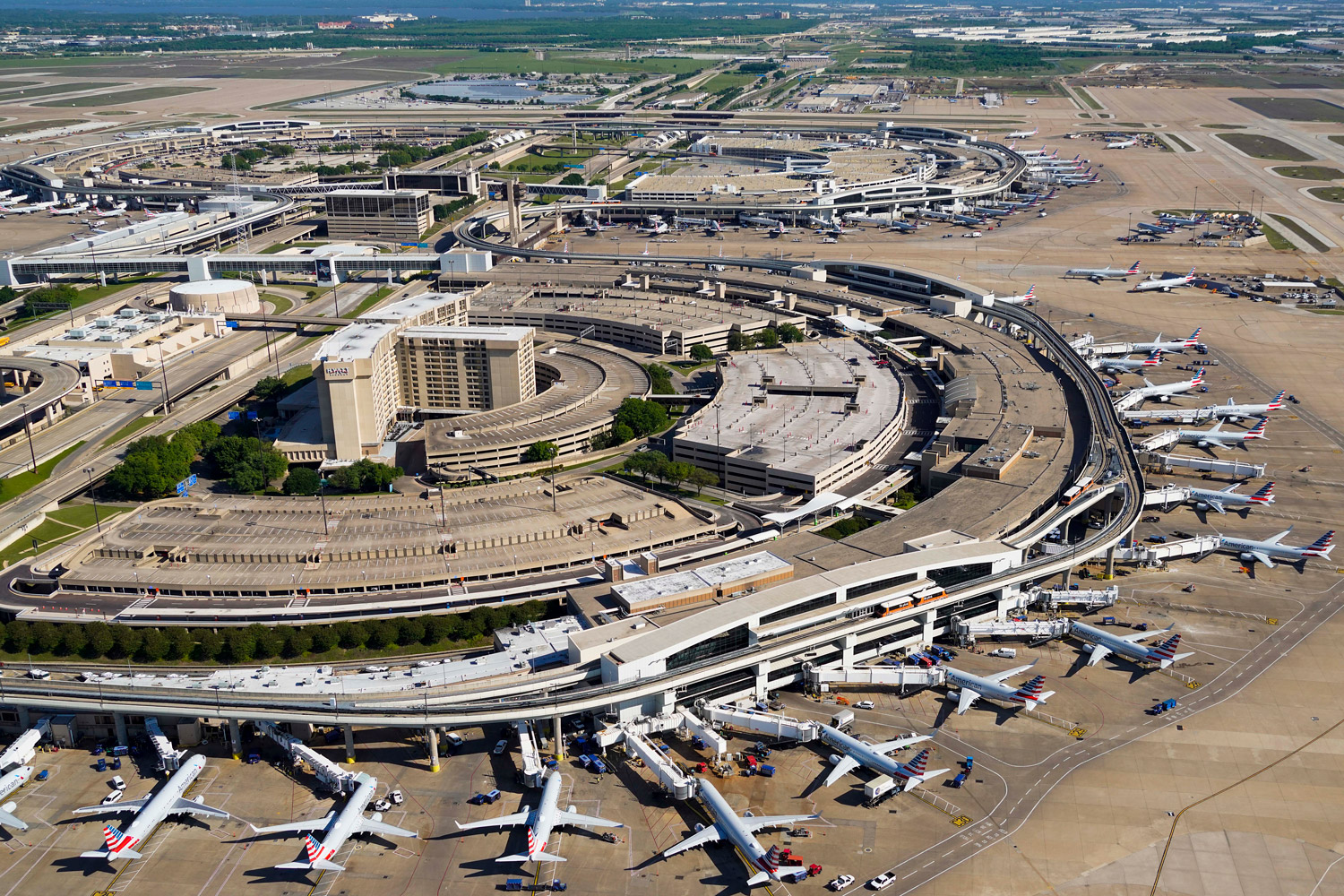
Location: Texas, USA
Architect: Gyo Obata
Area: 69.93 km²
Dallas Fortworth International Airport, the owner of the title of the biggest airport in Texas, was built on 17,000 acres of land. The airport, which started operating in 1973, has 5 terminals and 7 runways. In addition to being the 5th largest airport in the world by size, it is the 3rd busiest airport in the world in terms of aircraft movements.
The passenger capacity is 73 million and the average annual passenger count is recorded as 39 million. Dallas Fortworth International Airport is renowned for its emphasis on passenger satisfaction, offering services for both the leisure and business needs of passengers.
6. Orlando International Airport
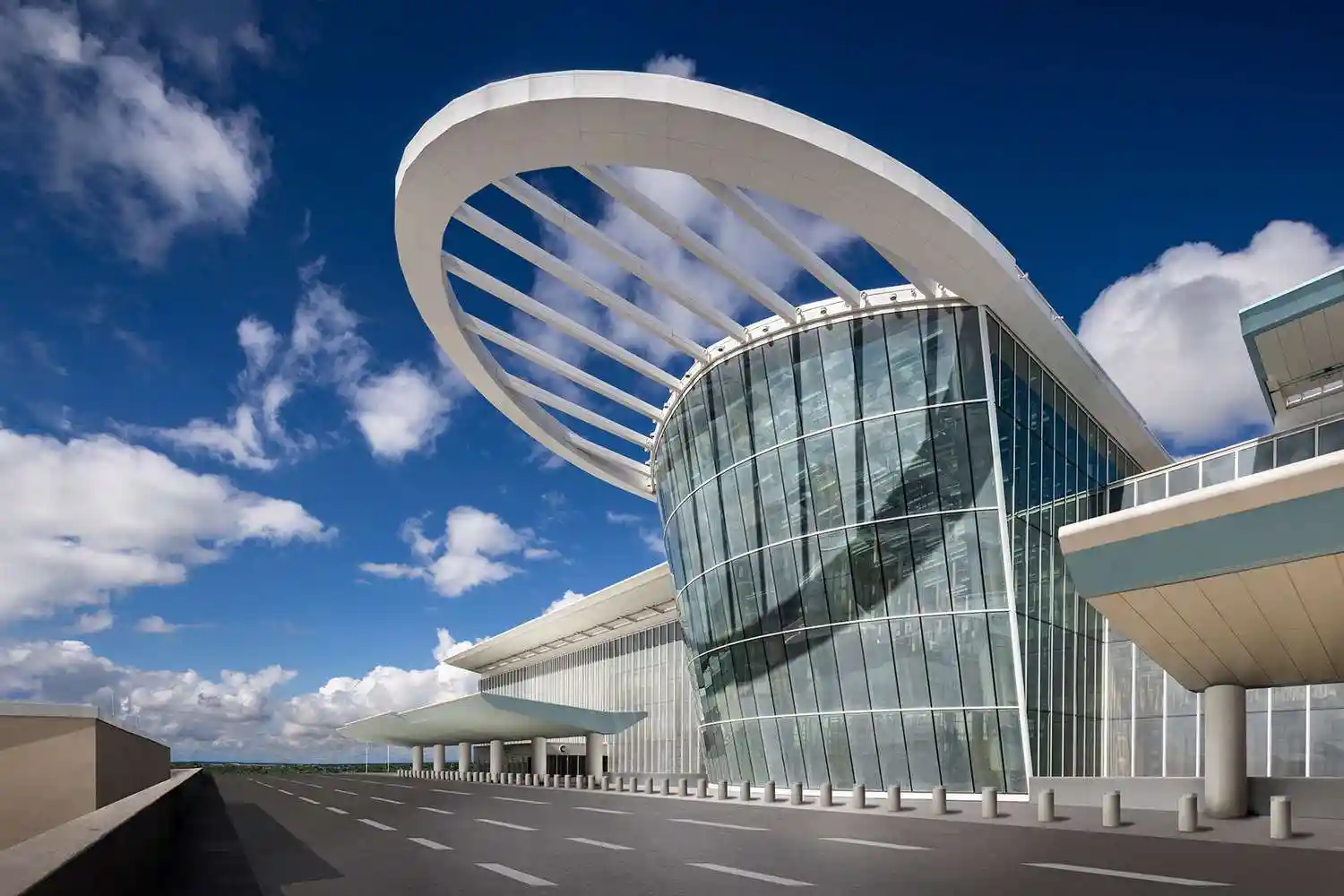
Location: Florida, USA
Area: 69.63 km²
Orlando International Airport, one of the busiest airports in the United States, is also the 4th biggest airport in the country. Formerly known as McCoy Air Force Base, it is spread over 13,440 acres of land and opened in 1981. The airport, which has a passenger capacity of 44 million, has a total of 4 runways. In addition to the existing North Terminal A/B complex, Fentress Architects designed the South Terminal. The South Terminal Complex will have 120 new gates between two terminals, C and D.
7. Washington Dulles International Airport
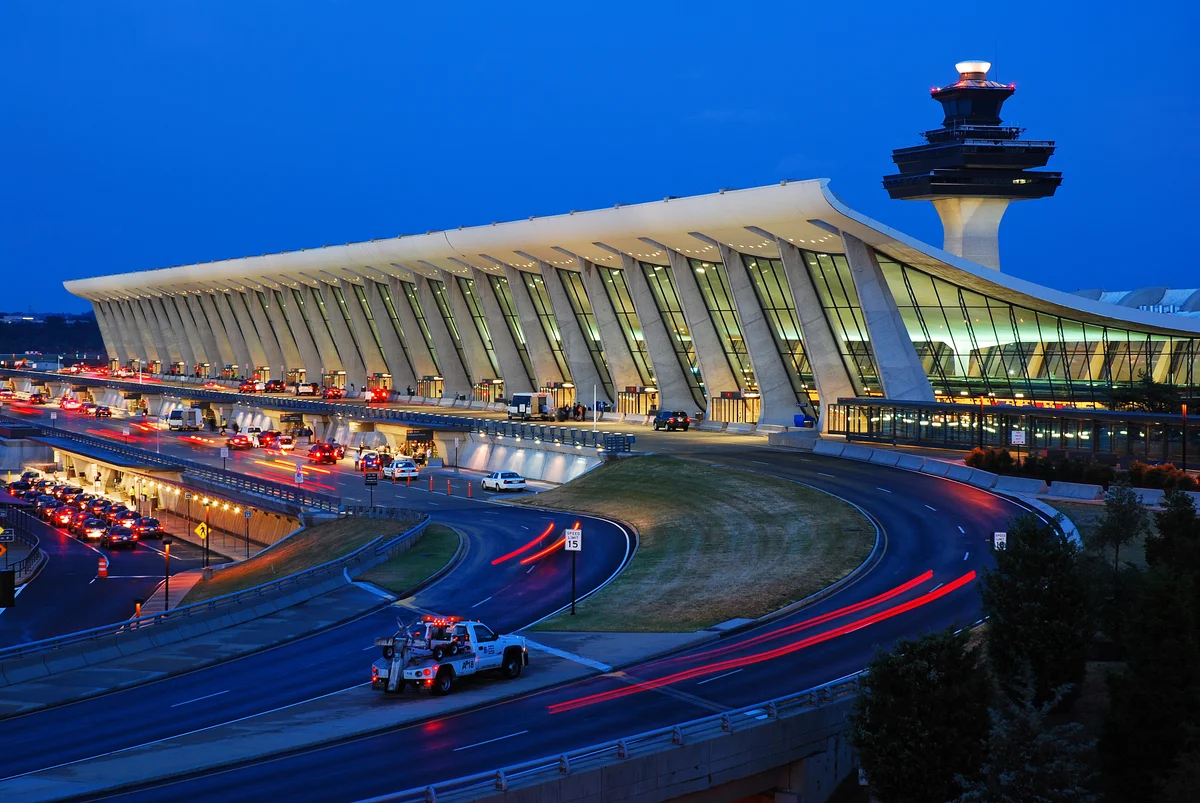
Location: Washington D.C., USA
Architect: Eero Saarinen
Area: 52,6 km²
The airport, named after the 52nd US Secretary of State John Foster Dulles, is counted on an area of 12,992 acres. Despite being an important transportation hub with its size and well-designed infrastructure, there is only one main and two intermediate terminal buildings. Equipped with four runways, the airport serves the areas connecting the Baltimore-Washington metropolitan area. It is famous for its modernist architecture with its unique eye-catching mobile lounges. It has a passenger capacity of 21 million.
8. Beijing Daxing International Airport
Location: Beijing, China
Architect: Zaha Hadid Architects
Area: 47 km²
Beijing Daxing International Airport, ranked 8th among the biggest airports, is the largest airport in China. It also holds the distinction of being the largest single-building airport in the world. The design, which has a futuristic design, is also inspired by traditional Chinese architecture.
The terminal building is shaped like a starfish. Thanks to the compact radial design of the terminal, the maximum number of aircraft can be parked directly at the terminal with a minimum distance from the center of the building. The airport, which serves 45 million passengers per year, is planned to be expanded to serve 72 million passengers by 2025, 100 million passengers, and 4 million tons of cargo annually. Thus, Beijing Daxing International Airport aims to be the busiest airport by 2040.
9. George Bush International Airport
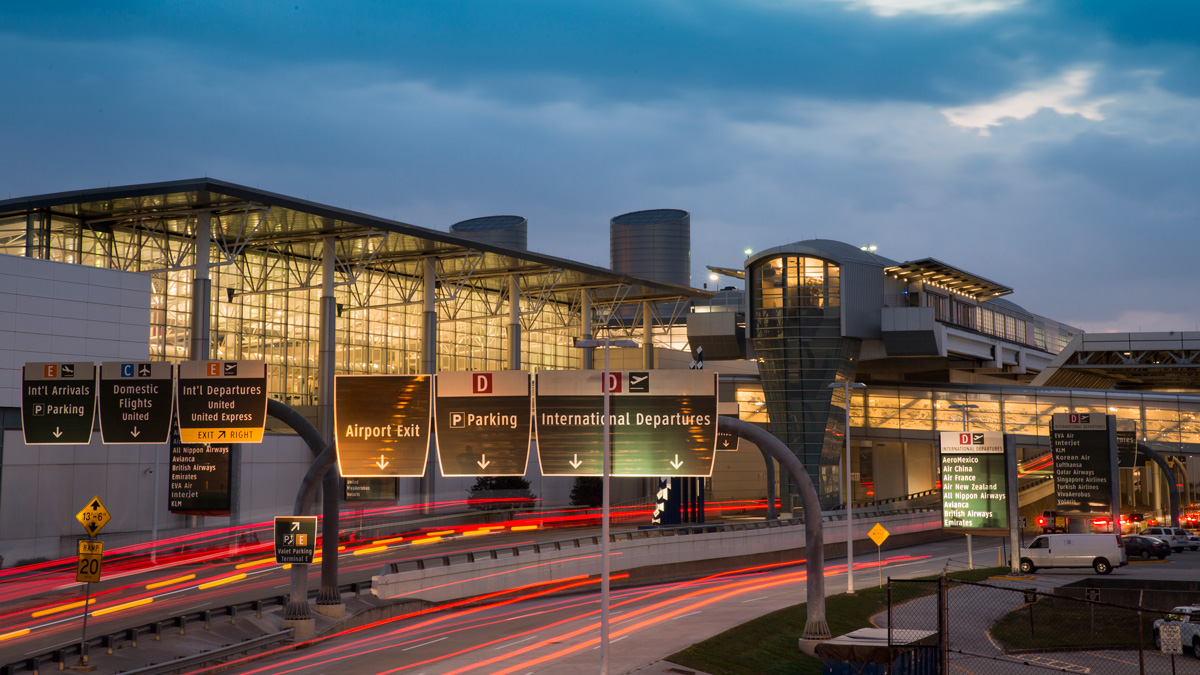
Location: Houston, Texas, USA
Area: 44.5 km²
The airport, which is ranked 9th among the biggest airports in the world, was opened in 1969 under the name Houston Intercontinental Airport. It was named after the 41st President of the USA, George HW Bush, in 1997. George Bush International Airport, which has the title of the largest airport in Houston with its area of more than 11,000 acres, has 5 terminals and 5 runways. Terminal A is also known as the “IAH Mickey Leland Terminal.” The architectural design of this terminal, which resembles a flying bird, is an indication of respect for the aviation heritage of the region.
10. Shanghai Pudans International Airport
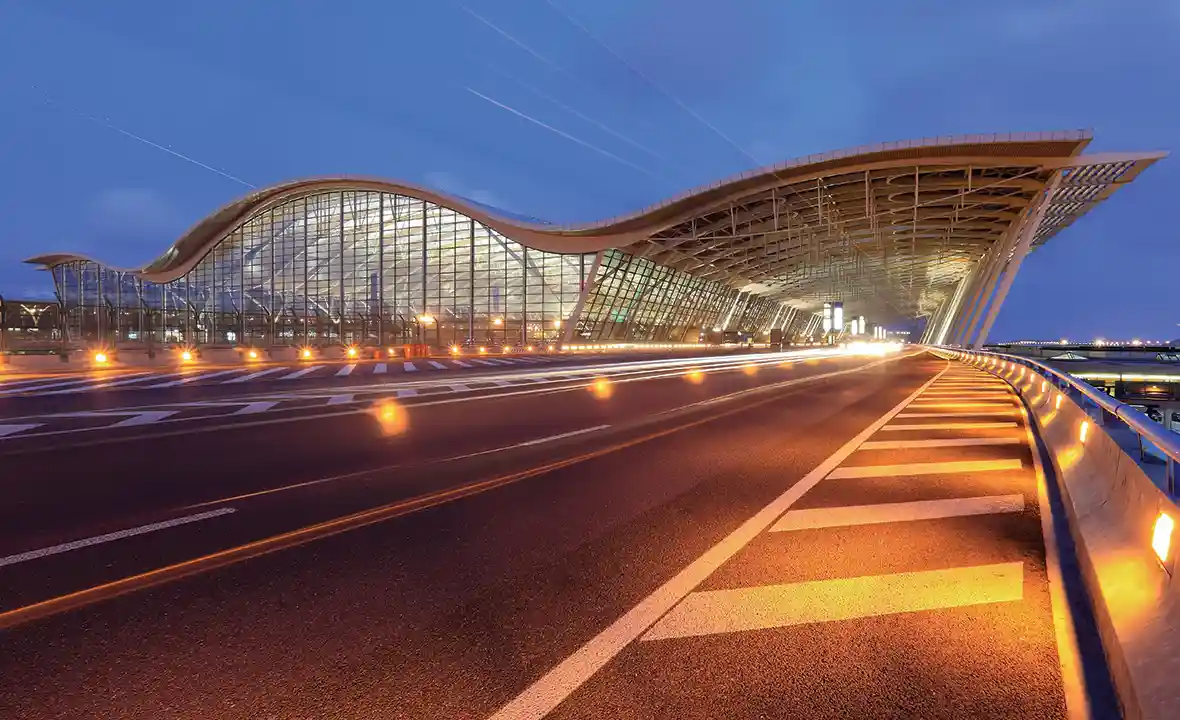
Location: Shanghai, China
Architect: Paul Andreu
Area: 40 km²
One of China’s two international airports, Shanghai Pudans International Airport, began operating in 1999. It is one of the biggest airports in Asia and the world’s 3rd busiest airport in terms of cargo traffic. Due to its advantageous location, it has become an important center for passengers traveling to and from Asia, Europe, and other continents. It has a total of 5 runways, with the 3rd passenger terminal built in 2021 and 2 runways.
The Maglev Train is the world’s fastest commercial train and connects the airport to Shanghai city center. The airport has elevated roads that form arches over the water. The winged design of the terminal buildings is distinctive.
Bonus: Al Maktoum International Airport
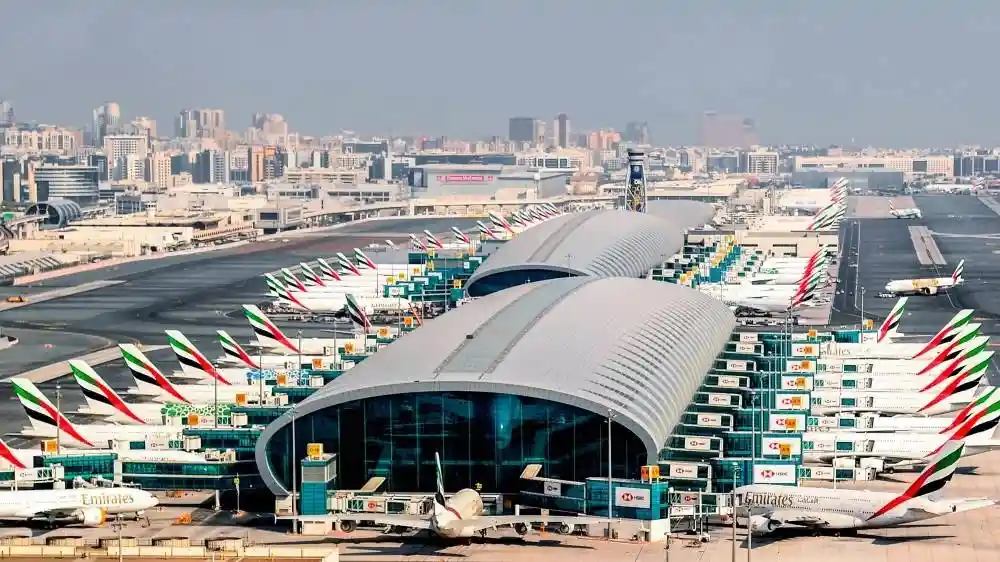
Location: Dubai, United Arab Emirates
Architect: Leslie Jones Architecture
Al Maktoum International Airport in Dubai was opened in 2010 for cargo flights only. However, it received approximately 877,400 commercial passengers in 2022. It is currently undergoing a major expansion process, aiming for 220 million passengers and 12 million tons of cargo. Designed by Leslie Jones Architecture, the airport will have a futuristic, wavy white canopy.
The first phase of the expansion, which consists of 3 phases, is expected to be completed in 10 years. It seems that the expansion and growth of Al Maktoum International Airport will cause changes in the list of the world’s 10 largest airports after its completion.
You may find these pieces interesting:
- Is the Tiny House movement dead in 2024?
- 10 Largest Airports in Asia
- 8 Smallest Architecture Examples
Now Stay Ahead with PAACADEMY: Check out our workshops at PAACADEMY to learn the most advanced design tools in architecture, from mastering parametric design and AI-driven workflows to exploring the latest in 3D printing and digital fabrication, all taught by leading experts in the field.




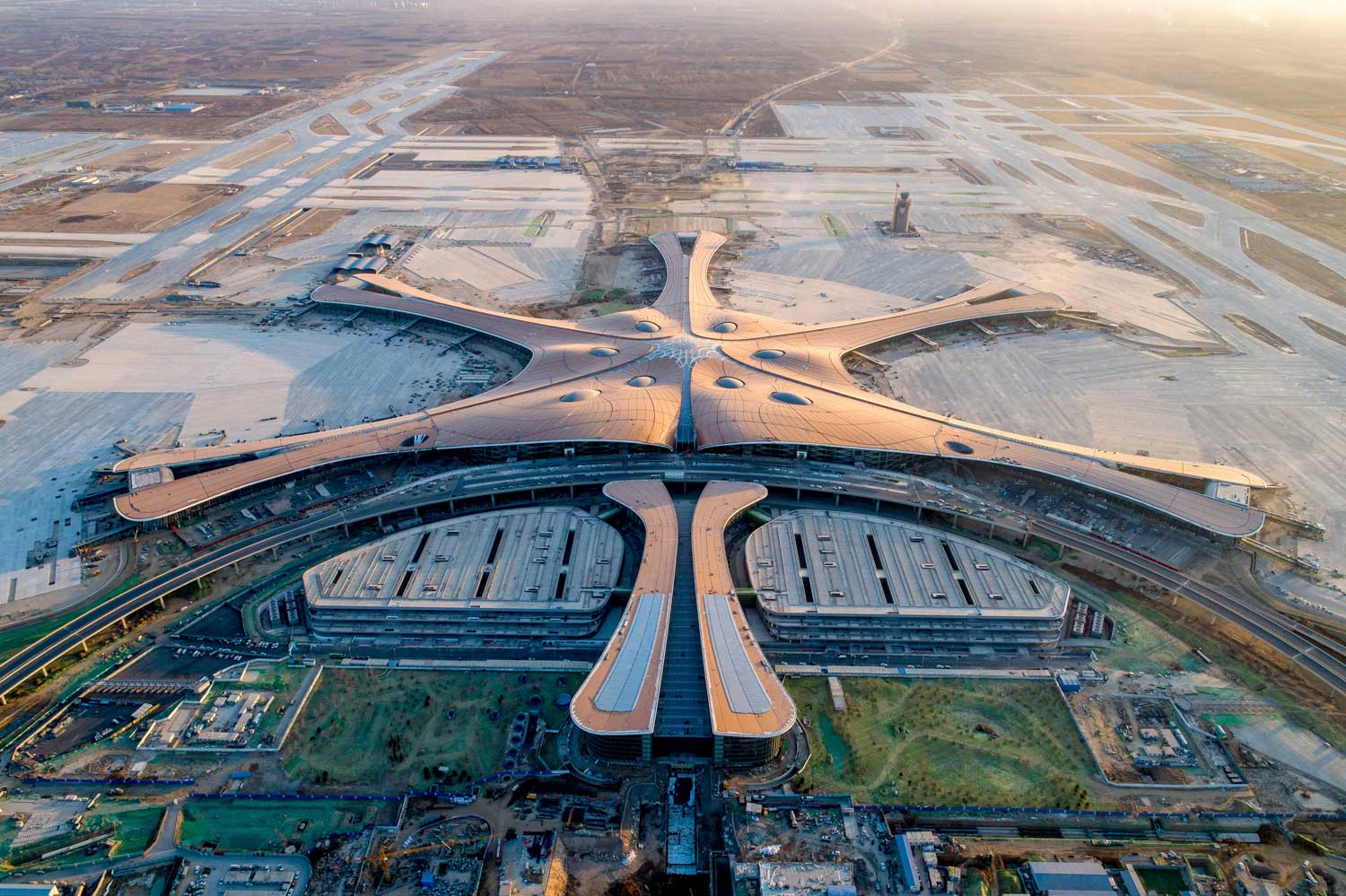
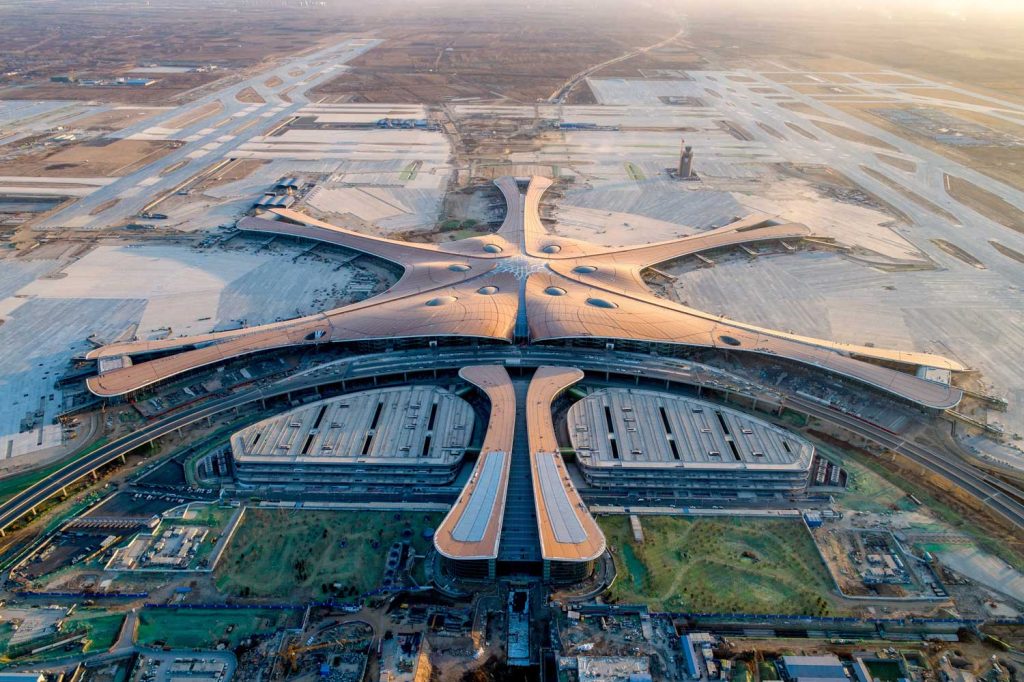














Leave a comment